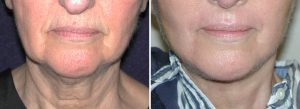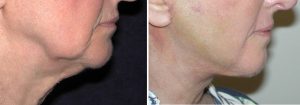Background: A facelift is one of the most recognizable cosmetic surgery procedures in all of plastic surgery. Despite its familiarity to the public, it is a procedure that has a lot of misconceptions about it. One of the most common is the extent of facial involvememt. Often perceived as involving the full face, a facelift is better understood in that regard by its more formal name…a neck-jowl lift. The operation manipulates and elevates tissues over the lower third of the face only. While it is true that other more ‘northern’ facial procedures may be simultaneously done with a lower facelift, as an isolated procedure it is restricted to the ‘southern’ hemisphere of the face.
With this understanding of what a facelift really is, this should also affect how one perceives its recovery. Many believe facelift recovery is prolonged and severe…when almost the opposite is true. With swelling and bruising restricted to below the level of the eyes, the distortions to the face are less severe. It is not a ‘full face’ recovery.
Case Study: This 58 year-old female was bothered by her neck sagging and jowls. Her eyes had a much more acceptable amount of aging and were not of interest for surgical improvement. Thus she opted for a full lower facelift. (neck-jowl lift) She also was going to have a concomitant rhinoplasty.
Under general anesthesia she had a full facelift that included neck liposuction and midline platysma muscle plication, extended face and neck skin flaps with SMAS flap elevation and plication.


Case Highlights:
1) A facelift is a procedure that affects the lower face of the jowls and neck.
2) The recovery from an isolated facelift is less prolonged than most people think.
3) Swelling and bruising wil occur in the face and neck and will take 2 to 3 weeks to largely resolve.
Dr. Barry Eppley
Indianapolis, Indiana




